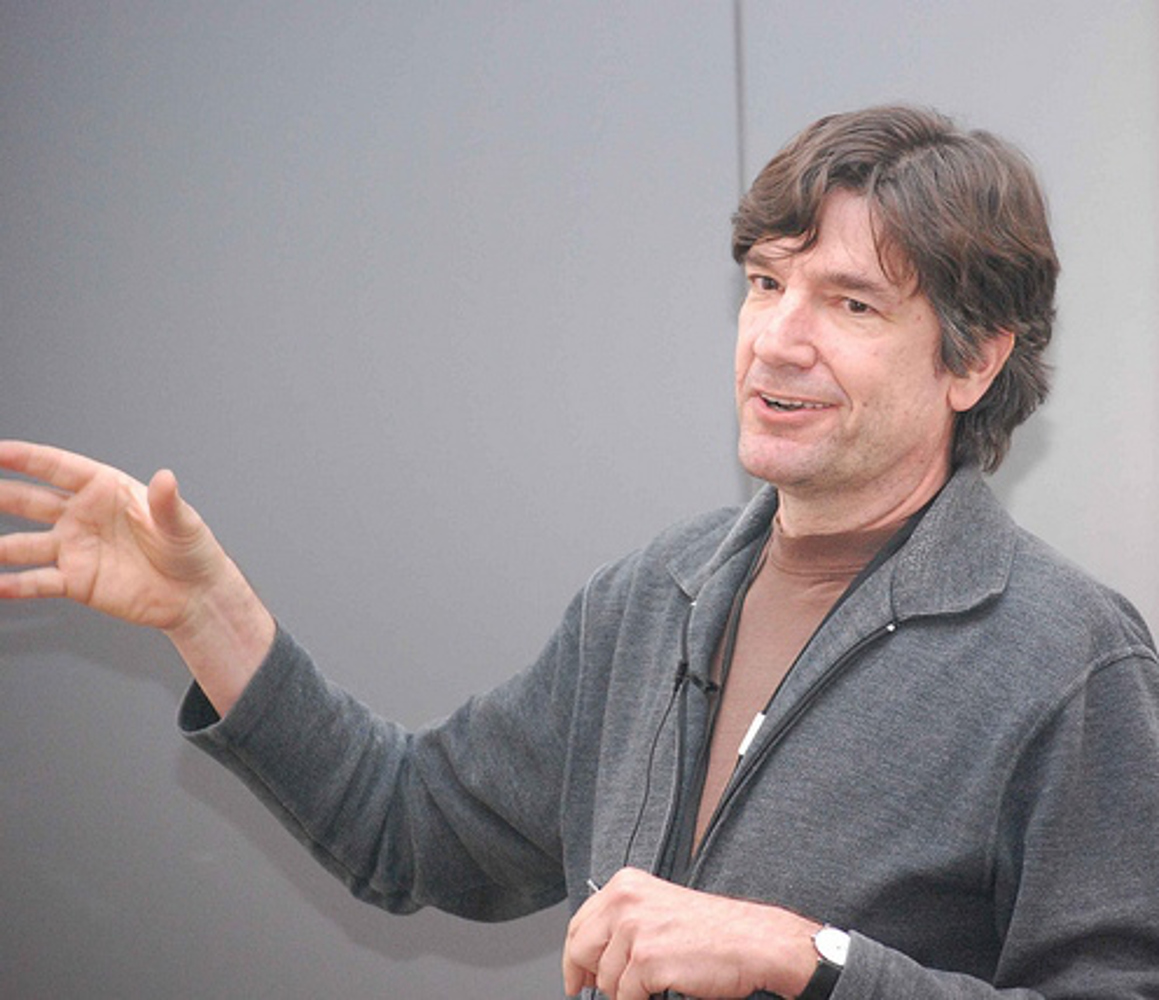More about Alan Rath
Works by Alan Rath

Sr. Contributor
Alan Rath is pioneer in electronic mixed media, harkening back to that bygone age when artists actually had to know how to do something to be successful.
The lover of contemporary art must dread the inevitable comment from visiting relatives while milling about the local museum: “My three year old (or dog, Koko the gorilla, etc) could have done that.” In fact, toddlers and animal savants have produced some remarkable art, but that’s neither here nor there. Suffice it to say the answer to this much-dreaded comment is Alan Rath.
Alan Rath was born in Cincinatti, Ohio in 1959, amidst the fortuitous zeitgeist of Robbie the Robot, and “Gort” of campy sci-fi classics. Then he came of age when electronic music was just exploding onto the pop-culture scene, and it became his first love. Sportingly he admits, “I can’t make music, so I make these other things.”
Searching for an alternative outlet for his obsession with the pulse and rhythm late-‘70s synthesizer music, Rath found his way to the Massachusetts Institute of Technology where he studied electrical engineering. Ever fascinated by movement and the play between the organic and the technological, Rath works with media ranging from elaborately designed electronic marvels to fluid, kinetic mobiles.
As an artist who has viable technical skills to back up his radical vision, Alan Rath is a rare bird in an age when a term like “post-postmodernism” is actually deemed to have some meaning. He’s a scientist and inventor as much as he is an artist, a Leonardo da Vinci for the information age.
So the next time your Duck Dynasty-watching uncle from out of town says the obligatory, “My three year old could have done this,” your answer is simply, “Why yes…assuming your three year old is an MIT educated engineer.”
Featured Content
Here is what Wikipedia says about Alan Rath
Alan Rath (1959–2020) was an American electronic, kinetic, and robotic sculptor. He was born in Cincinnati, Ohio and graduated from the Massachusetts Institute of Technology in 1982, with a BS electrical engineering. He worked for a Boston engineering firm after graduation, and in 1982, moved to Oakland, California to pursue his artistic interests.
Arecibo, in the collection of the Honolulu Museum of Art, is an example of how the artist combines electronics with an undeniable artistic talent to create witty statements about technology gone berserk. The Hara Museum of Contemporary Art (Tokyo), the Honolulu Museum of Art, the Los Angeles County Museum of Art, the San Francisco Museum of Modern Art, the Walker Art Gallery (Minneapolis), and the Whitney Museum of American Art (New York City) are among the public collections holding work by Rath.
Check out the full Wikipedia article about Alan Rath











